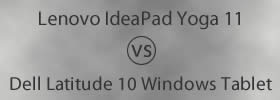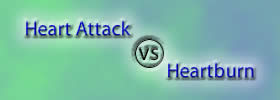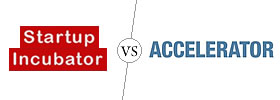Difference between RSS and Atom
Key Difference: Real Simple Syndication (RSS) is a family of web feeds formats that are used to publish frequently updated works. Atom refers to a pair of standards for web feeds.
Web feeds such as RSS and Atom are often used in order to get regular updates from websites. This makes it easier than having to visit the site manually in order to check if the data was updated or no. The use of web feeds also allows the users to consolidate the updates in one place and view it through feed readers such as Google Reader. Web feeds are important for publishers as it helps them automate the syndication process. RSS and Atom are two different types of web feeds that are used today.
 Real Simple Syndication (RSS) is a family of web feeds formats that are used to publish frequently updated works such as blogs, news entries, journals, etc. in a standardized format. The RSS document is called as a ‘feed’ or a ‘web feed’ and is visible in a reader, in either a full-text or a consolidated format and also includes publishing dates and authorship. RSS also helps consolidate different types of RSS in one place which can be read using feed readers. The latest version of RSS is the 2.0 version that was released in September 2002. RSS allows plain text or escaped HTML as a payload. It also allows the same document to be viewed by a variety of applications because it is uses the standard XML format for publications. RSS also includes support for XML namespaces. In addition to supporting web document, RSS 2.0 also supports podcasts, videos and audios.
Real Simple Syndication (RSS) is a family of web feeds formats that are used to publish frequently updated works such as blogs, news entries, journals, etc. in a standardized format. The RSS document is called as a ‘feed’ or a ‘web feed’ and is visible in a reader, in either a full-text or a consolidated format and also includes publishing dates and authorship. RSS also helps consolidate different types of RSS in one place which can be read using feed readers. The latest version of RSS is the 2.0 version that was released in September 2002. RSS allows plain text or escaped HTML as a payload. It also allows the same document to be viewed by a variety of applications because it is uses the standard XML format for publications. RSS also includes support for XML namespaces. In addition to supporting web document, RSS 2.0 also supports podcasts, videos and audios.
![]() Atom refers to a pair of standards for web feeds. Wikipedia defines Atom as, “The Atom Syndication Format is an XML language used for web feeds, while the Atom Publishing Protocol (AtomPub or APP) is a simple HTTP-based protocol for creating and updating web resources.” The Atom was developed as an alternate to address the limitations and flaws of the RSS. According to Atom’s advocate Ben Trott, RSS included limitations such as lack of on-going innovation strictness on backward compatibility. The feed work in similar to RSS feeds and can be read using readers. Atom 1.0 a variety of payload types including plain text, escaped HTML, XHTML, XML, Base64-encoded binary, and references to external content such as documents, video, audio streams, and so forth. Atom is based on a new IETF standard that was published in 2005.
Atom refers to a pair of standards for web feeds. Wikipedia defines Atom as, “The Atom Syndication Format is an XML language used for web feeds, while the Atom Publishing Protocol (AtomPub or APP) is a simple HTTP-based protocol for creating and updating web resources.” The Atom was developed as an alternate to address the limitations and flaws of the RSS. According to Atom’s advocate Ben Trott, RSS included limitations such as lack of on-going innovation strictness on backward compatibility. The feed work in similar to RSS feeds and can be read using readers. Atom 1.0 a variety of payload types including plain text, escaped HTML, XHTML, XML, Base64-encoded binary, and references to external content such as documents, video, audio streams, and so forth. Atom is based on a new IETF standard that was published in 2005.
Though RSS and Atom perform the same duty, they differ from each other in many ways. While RSS contains only plain text or escaped HTML as a payload, ATOM offers a variety of payloads including HTML, XHTML, XML, etc. Another feature that Atom has been praised for would be date format. Atom shows the date timestamp on the document listing the date that website was last updated, while RSS shows the timestamp of the date and time when the feed was updated. RSS code is also not reusable in other XML vocabularies, while Atom code can be used with other XML vocabularies including the RSS. Atom also provides two separate tags such as <summary> and <content>. Unlike RSS, Atom also allows extensions to its namespaces. It also uses Encryption and XML Digital Signature in addition to other web encryption techniques that are already used with RSS. However, RSS is still the most popular web feed standard used because of its early launch and capture of the market.
|
|
RSS |
Atom |
|
Definition |
Real Simple Syndication (RSS) is a family of web feeds formats that are used to publish frequently updated works. |
Atom refers to a pair of standards for web feeds. |
|
Content model |
RSS 2.0 may contain either plain text or escaped HTML as a payload. |
Atom offers a variety of payload types including plain text, escaped HTML, XHTML, XML, Base64-encoded binary, and references to external content such as documents, video, audio streams, and so forth. |
|
Date formats |
RSS shows the date timestamps of data when the feed was created and last updated. |
Atom shows the date timestamp when the website was last updated. |
|
Internationalization |
RSS vocabulary has a mechanism to indicate a human language for the feed. |
Atom uses the standard xml:lang attribute. Atom also supports characters outside the US ASCII character set. |
|
Modularity |
RSS vocabulary elements are unusable in other XML vocabularies. |
Atom allows the reuse of elements outside the context of an Atom feed document. |
|
Publishing protocols |
RSS has two main publishing protocols; Blogger protocol and MetaWeblog. |
Atom has one standardized protocol. |
|
Required content on a feed |
RSS has a more loose approach and does not require much data. |
Atom is more restrictive require more data. |
|
Distinction between partial and excerpts |
RSS does not distinguish a partial from an excerpt. |
Atom distinguishes a partial from an excerpt. |
|
Autodiscovery |
Not a standardized feature. |
A standardized feature. |
|
Aggregating and extracting |
RSS has a more complicated aggregating and extracting process. |
Atom has an easier aggregating and extracting process. |
Image Courtesy: knssradio.com, theredelephant.org









Comments
Kamal Jat
Wed, 10/14/2015 - 16:07
Add new comment